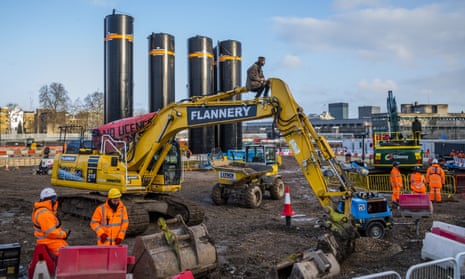This week, a rare outbreak of sanity is predicted in British government rail policy. The eastern branch of David Cameron’s HS2 vanity railway is likely to be cancelled in favour of a flurry of other improvements to rail services. Rather than whingeing, red-wall Tories should be cheering. Their constituents should be getting about sooner and faster, rather than merely getting more swiftly to London some day.
This leaves in place the southern leg of what now appears to be principally a London-to-Birmingham high-speed “shuttle”. Its value for money – which was based on the northern leg – has collapsed. The chief beneficiaries of the surviving HS2 will be Midlands commuters into the metropolis. The contribution to “levelling up” will be zero. Meanwhile, anyone criticising China for carbon-guzzling should witness the carbon-fest that is HS2’s devastation of the London Borough of Camden. Several hundred homes have already been destroyed.
The real truth is that lockdown is throwing transport investment into turmoil. While car use is surging back to pre-pandemic normal, rail use, and especially rail commuting, is down by 30-35%, with no one able to predict how it might recover. Investment in trains is still locked into decades-old predictions of hypermobility, bedevilled by arguments over costs, subsidies, emissions and pollution levels.
Meanwhile Heathrow has still not been put out of its third runway misery, it appears largely because Grant Shapps, the transport minister, has a soft spot for domestic air travel. The government’s planning favouritism towards sprawl housing is carpeting the countryside in road-hungry, car-reliant development. New railways are hugely costly – as against resignalling and other upgrades – but remain politically appealing. This is despite their being used for barely 2% of journeys, with ticket prices ensuring for trains a wealthier passenger profile than either planes or cars.
As for new lines, it appears that the £100bn cost of the original HS2 has not only killed its own completion, but also the equally wasteful new Manchester-Leeds HS3. A courageous Shapps would have killed the whole of HS2 and doubled his spend on other lines in the north of England. As it is, the overwhelming bulk of his investment in new railways now appears to be going south of Crewe. Where is the politics in this?
If Boris Johnson really wanted to do the popular thing by his northern voters, he would hurl his money into upgrading rail commuter services in south Lancashire and West and South Yorkshire. Other than that, he would tinker with the north’s dire roads, which are overwhelmingly how northerners, their goods and services get around, whether or not southerners find this politically correct.
As it is, transport policy is being fashioned from maps, one showing lines flowing to and from London and the other showing marginal Tory constituencies. This is a high-speed route to chaos.
Simon Jenkins is a Guardian columnist

